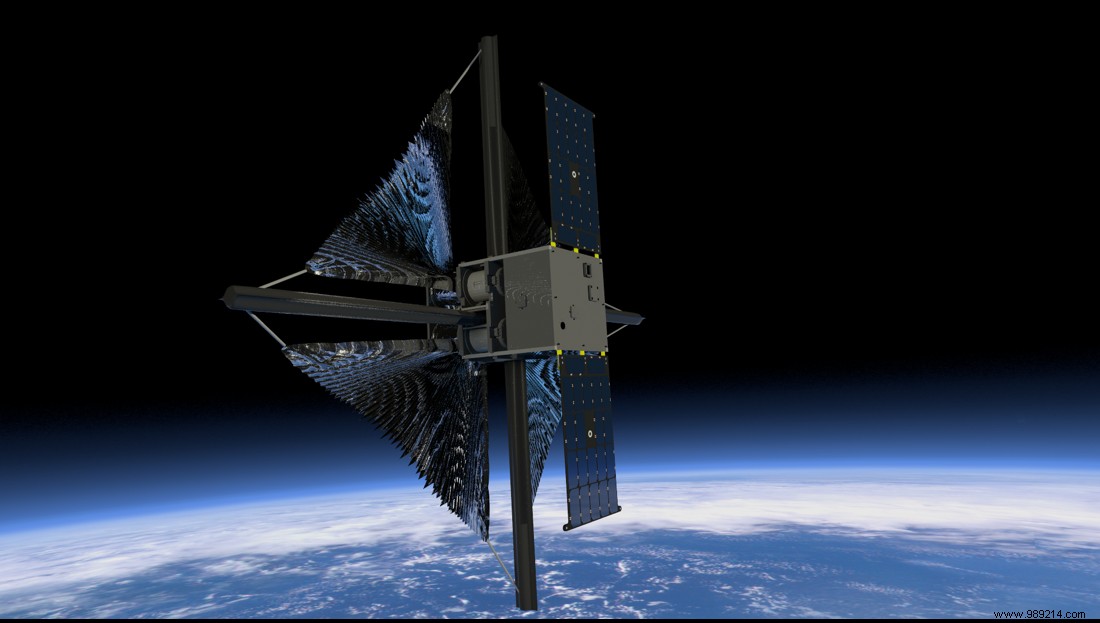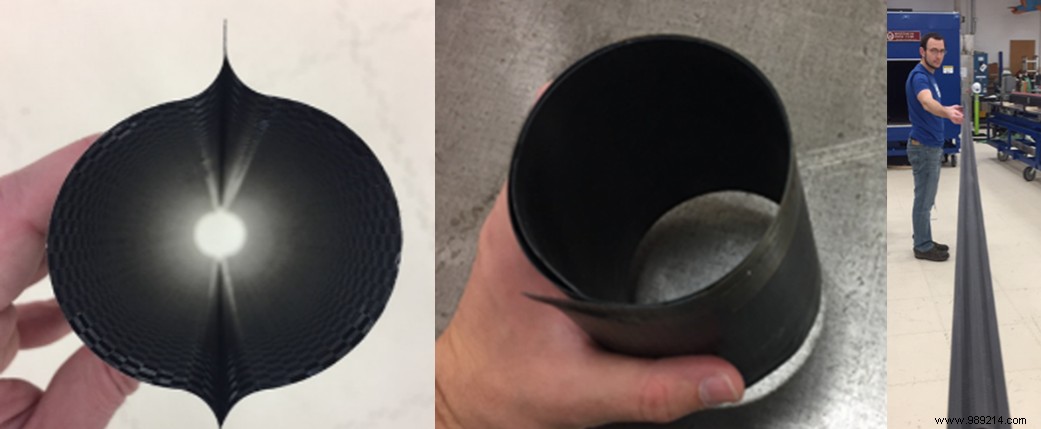NASA has announced plans to test a new composite solar sail system in the middle of next year, deployed from a CubSat. The mission will refine the technologies associated with these structures which represent the future of efficient low-cost means of propulsion.
The principle of the solar sail is based on the idea of using the Sun's radiation (photons) to ensure the propulsion of a probe, as a sailboat could do s relying on the force of the wind. In the longer term, this means of propulsion could allow us to travel longer distances in space while saving energy. It could also extend the duration of missions in addition to the current chemical propulsion means limited by the quantity of fuel available.
Such structures have already been tested in the past, most recently as part of the LightSail 2 mission, developed by the Planetary Society. Placed at an altitude of about 720 km, the small CubSat (10 × 10 × 30 cm) has indeed successfully deployed its solar sail of thirty-two square meters in July 2019.
NASA plans to release another of these sails into space next year. This new system, called ACS3, has been under development since 2018 by the company NanoAvionics.
This new mission will be based on the deployment of a lighter and more durable "composite boom" sail that could save mass and therefore costs for future launches. The sail will be square in shape. Fully extended, it will cover approximately 36 square meters and will be supported by four booms. According to NASA, the same technology could also support sails about the size of a basketball court (just over 400 square meters).

Work is also underway at NASA's Langley Research Center to develop systems for deploying large systems, such as solar sails, on small satellites such as CubSats, often no bigger than a toaster.
NASA said the booms for this next mission, which work much like a sailboat's boom that connects to its mast and keeps the sail taut, will be manufactured made from a carbon fiber reinforced polymer material, which will make them 75% lighter than standard metal ones.
According to NASA, this composite material can be rolled up for compact storage, but will remain solid when unrolled. It will also be much more resistant to heat-induced warping .

The objectives of the mission will be to demonstrate deployment success of these composite booms, just like that of the sail in low orbit. It will naturally be a question of evaluating the effectiveness of the shape and design of the structure, but also of characterizing the differences in thrust during the progressive changes of orbit. This data can then inform researchers on the design of larger and more complex systems.